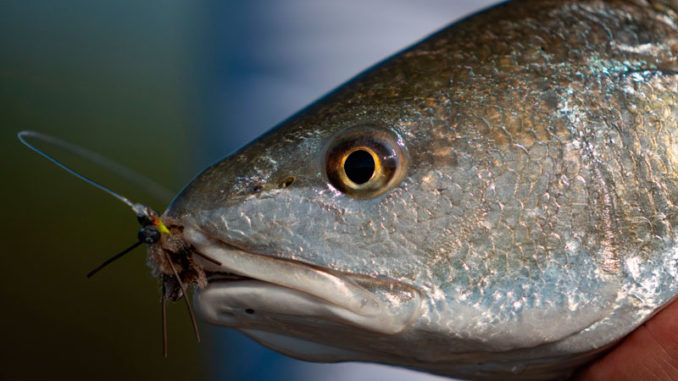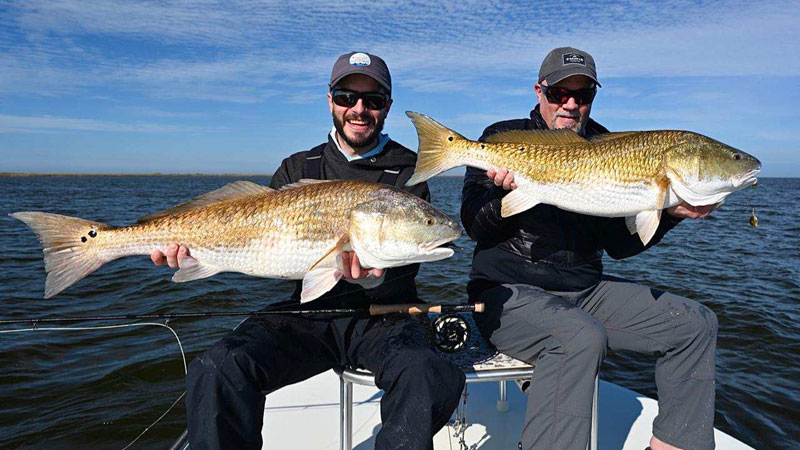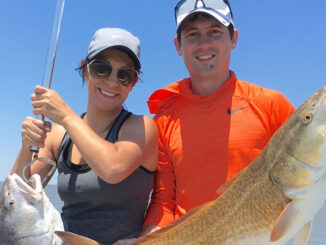
Pick your days, conditions, and a fly rod can provide excitement in the marsh
Few anglers realize that Louisiana is a flourishing fly-fishing locale for redfish, especially during the winter when the bull reds push into the interior marshes. Avid fly-rod anglers come from all over for the opportunity to present a fly in front of a 30-pounder.
But what is the draw of catching one of these many behemoths that patrol the marshes using fly gear as opposed to conventional gear?
According to Capt. Peter Scafaru of New Orleans, owner of Marsh on the Fly Guide Service, it’s the challenge and the sportsmanship that profoundly connects the fly angler to nature.
“With any outdoor pursuit, you can always make it more sporting,” Scafaru said. “I believe one of the hardest things to do out there is to sight-fish for redfish and catch them on a fly. However, that’s what makes it rewarding. You become more immersed in the process of the chase than you would when blindly tossing a popping cork with shrimp. You have to be on your game at all times, because these fish come into view real quick, and they are gone just as quickly. If you aren’t careful, you will miss your chance.”
Ideal conditions
With fly fishing, you have to see the fish before you catch it, which makes it similar to sight-fishing with conventional gear.
“One thing I believe people don’t realize is that there is really no difference between sight-fishing and fly fishing. You are just using different techniques to catch fish,” Scafaru said. “So, wherever there is good sight-fishing there is good fly fishing.

“A clear, calm, sunny day is the best time for fly fishing around the marshes. It has to be reasonably calm so the flats don’t get blown out. If it is howling and windy, it can be tough controlling the boat and getting the fish that you can see, especially when you are pushing the skiff with a pole all day. Unlike other places, the wind in Louisiana affects the levels of water in the marsh a lot more than the tides do.”
What flies to use
Scafaru said it’s important to judge redfish behavior when deciding on the fly to use and how to present it.
“Occasionally, you may have to present the fly a few times before they eat it,” he said. “Sometimes, they are so on fire, they can hear it drop behind them, and they will turn around and whack it, but that’s what makes targeting them exciting.
“I usually end up fishing with an attractor pattern with 3- to 5-inch streamers instead of an imitator. An attractor pattern is a fly that looks like everything, but isn’t anything specifically. We often use marabou or strips of rabbit streamers, so the fly has a lot of good motion in the water — anything with a bit of bulk that can push water works.”
When it comes to the weight of the fly, Scafaru said it depends on the depth you are fishing.
“If you are fishing with a heavier fly in shallower water, it may drag in the mud too much,” he said. “If it is too light, the fish might not notice it. Too much weight can be just as problematic as too little weight. You want the fly to be at the redfish’s eye level.”
Similar to conventional lures, darker color flies work better in the mornings and evenings when the sun is lower. Natural colors work better when the sun is higher
Conserving reds
Scafaru said there is nothing quite like catching a redfish on a fly that you tied yourself.
“There are over 100 saltwater fly-fishing patterns out there,” he said. “Picking one and tying a fly at home, getting out on the water, tying the fly on your tippet and leader, and catching a fish on it. That’s what keeps me and others drawn in to the sport.
“Unfortunately, I don’t think there are as many bull reds around as there used to be. Many people attribute this, in equal parts, to the menhaden boats and the increase of recreational anglers overharvesting during the pandemic year. My belief is that you don’t always have to fill the cooler to have a great trip. We need to preserve our redfish fishery and only take what we can do justice to.”


